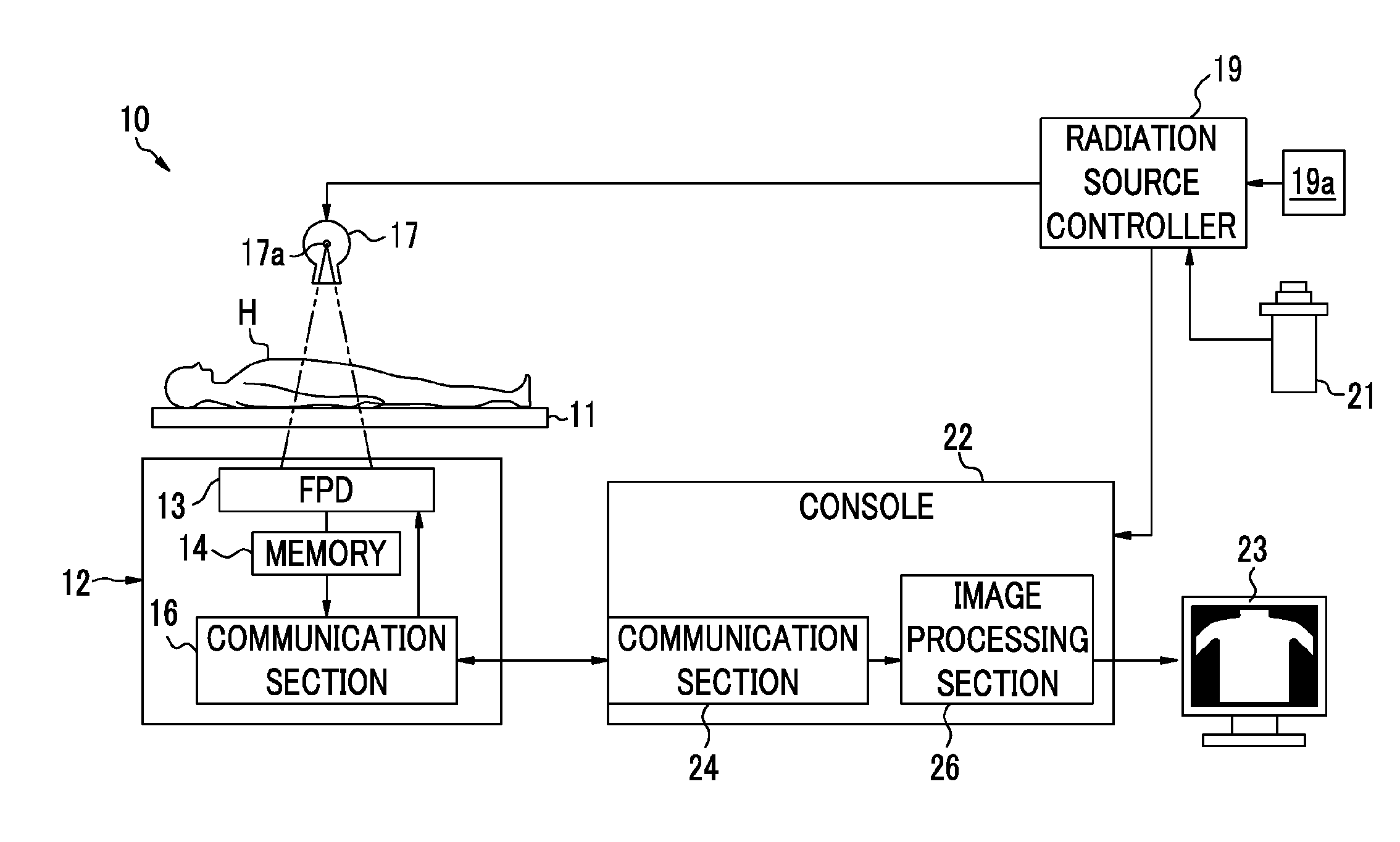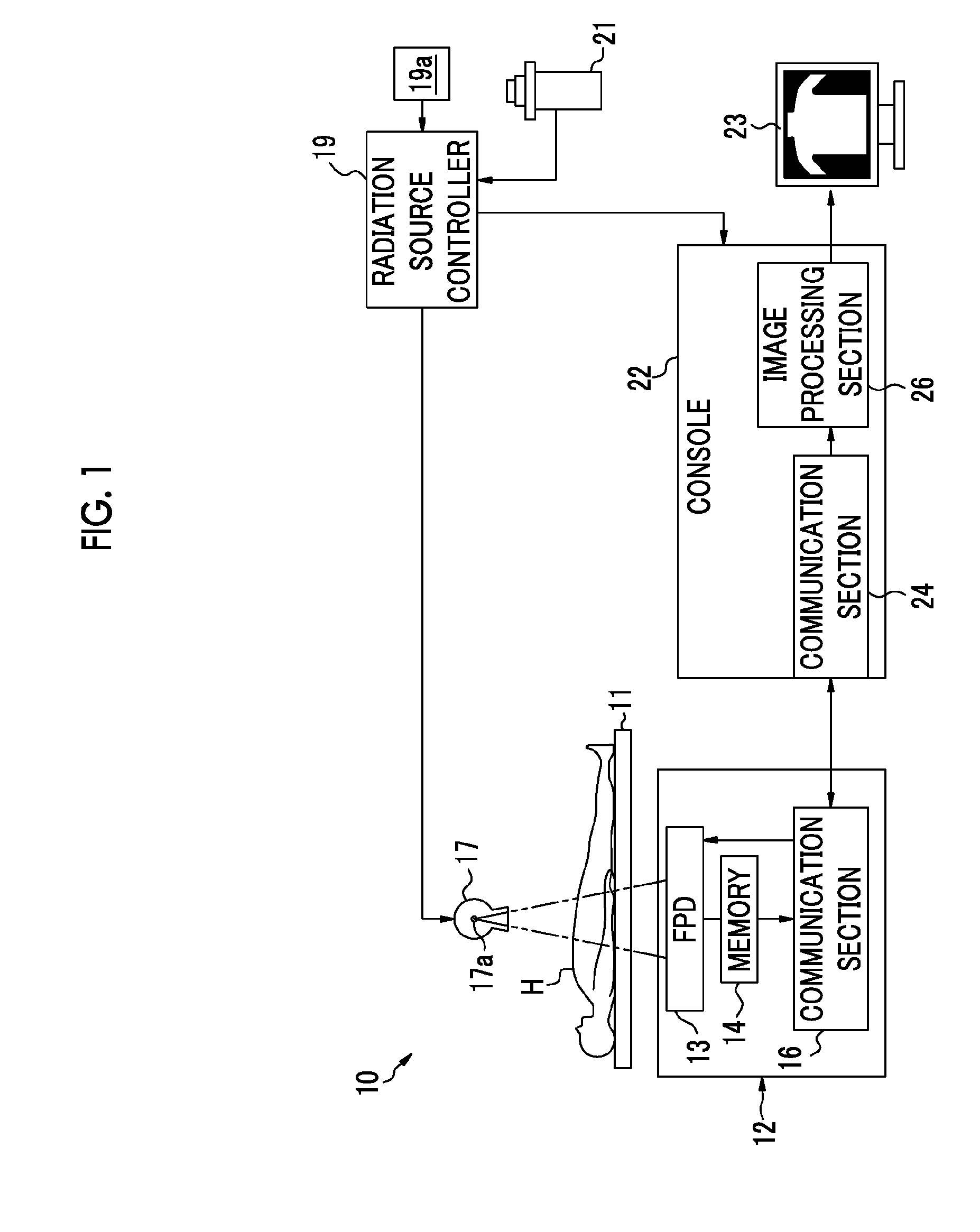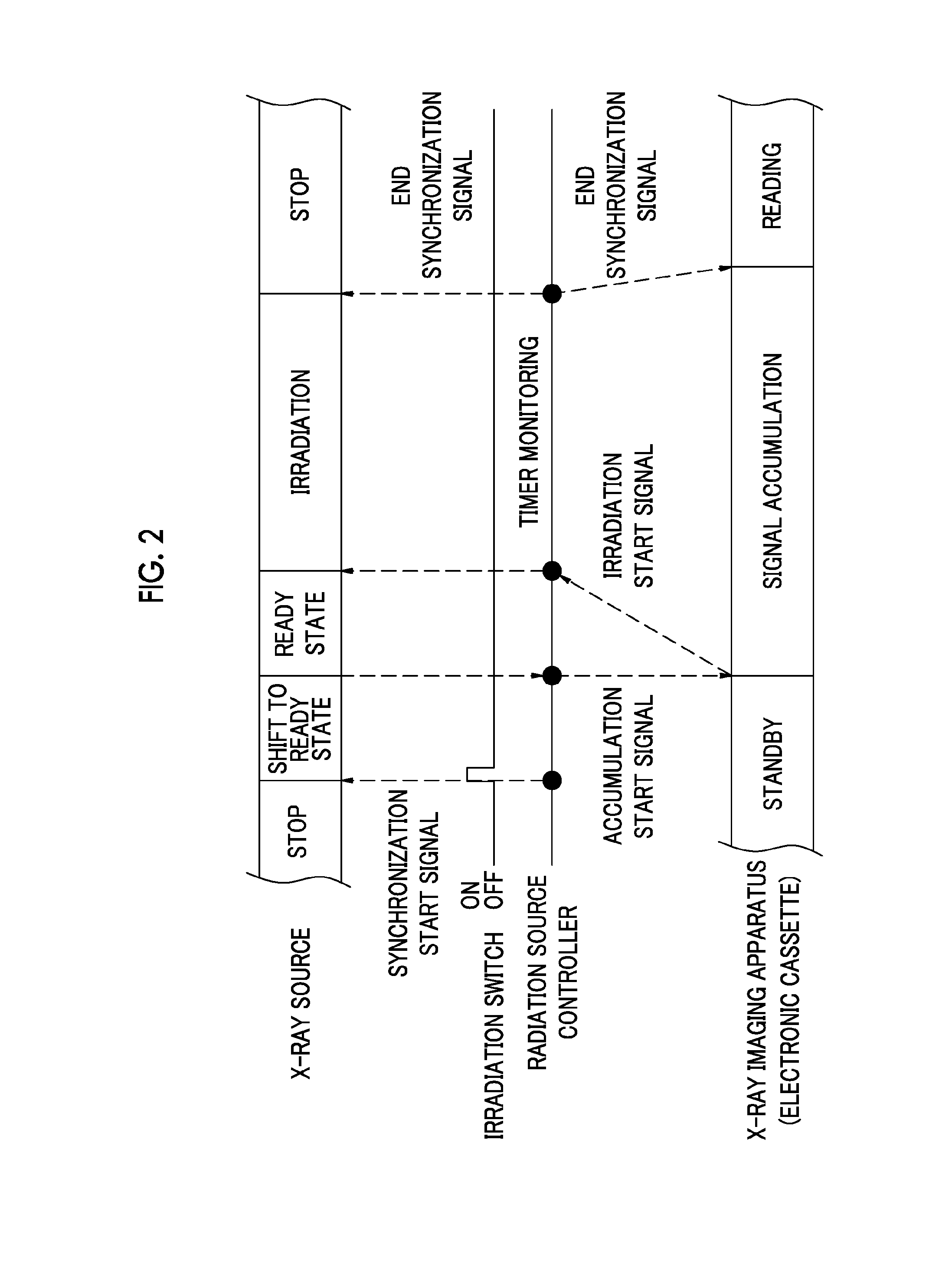Radiographic imaging apparatus, radiographic imaging system, and radiographic imaging method
- Summary
- Abstract
- Description
- Claims
- Application Information
AI Technical Summary
Benefits of technology
Problems solved by technology
Method used
Image
Examples
first embodiment
[0067]As shown in FIG. 1, an X-ray imaging system 10 includes an imaging stage 11, an electronic cassette (radiographic image detection device) 12, an X-ray source 17, a radiation source controller 19, a console 22, a monitor 23, and the like. The X-ray source 17 and the radiation source controller 19 constitute an X-ray generator. The electronic cassette 12, the console 22, and the monitor 23 constitute an X-ray imaging apparatus (radiographic imaging apparatus).
[0068]A subject H is placed on the imaging stage 11, and the electronic cassette 12 is set on the imaging stage 11 or between the imaging stage 11 and the subject H such that X-rays transmitted though the subject H are incident thereto.
[0069]The electronic cassette 12 is detachably provided on the imaging stage 11, and is a portable type which is usable even when the imaging stage 11 is not used, and is provided with an FPD 13, various circuits that control operations of the FPD 13, a memory 14, a communication section 16, ...
second embodiment
[0119]In the description of the above-mentioned first embodiment, the following example was given: by performing the rereading while changing the gain of the amplifier 72 until it is possible to obtain the X-ray image appropriate for observation of the subject H, only the X-ray image, which is finally read with an appropriate gain, is transmitted to the console 22. However, as described later in the second embodiment, by transmitting a plurality of the read X-ray images is transmitted to the console 22 while changing the gain of the amplifier 72 and by synthesizing the images, the X-ray image appropriate for observation of the subject H may be obtained. The second embodiment is the same as the first embodiment except the difference that a plurality of the X-ray images is synthesized. Accordingly, hereinafter, description will be given focusing on the difference. In addition, the common elements are represented by the same reference numerals and signs, and description thereof will be...
third embodiment
[0137]As shown in FIG. 12, each pixel PX of the FPD 13 is formed of a photodiode PD and transistors M1 to M3, and performs an accumulation operation, a reading operation, and a reset operation, in accordance with driving states of the respective transistors M1 to M3. The accumulation operation is an operation that accumulates the signal electric charge which is generated by photoelectric conversion, and the reading operation is an operation that outputs a voltage signal corresponding to the amount of the accumulated signal electric charge. The reset operation is an operation that drains the accumulated signal electric charge.
[0138]The photodiode PD is an element that generates a signal electric charge corresponding to the amount of light incident from the scintillator 41 through photoelectric conversion, and is connected to a gate electrode of an amplification transistor M1 and a source electrode of a reset transistor M3. In the case where the signal electric charge is accumulated a...
PUM
 Login to View More
Login to View More Abstract
Description
Claims
Application Information
 Login to View More
Login to View More - R&D
- Intellectual Property
- Life Sciences
- Materials
- Tech Scout
- Unparalleled Data Quality
- Higher Quality Content
- 60% Fewer Hallucinations
Browse by: Latest US Patents, China's latest patents, Technical Efficacy Thesaurus, Application Domain, Technology Topic, Popular Technical Reports.
© 2025 PatSnap. All rights reserved.Legal|Privacy policy|Modern Slavery Act Transparency Statement|Sitemap|About US| Contact US: help@patsnap.com



